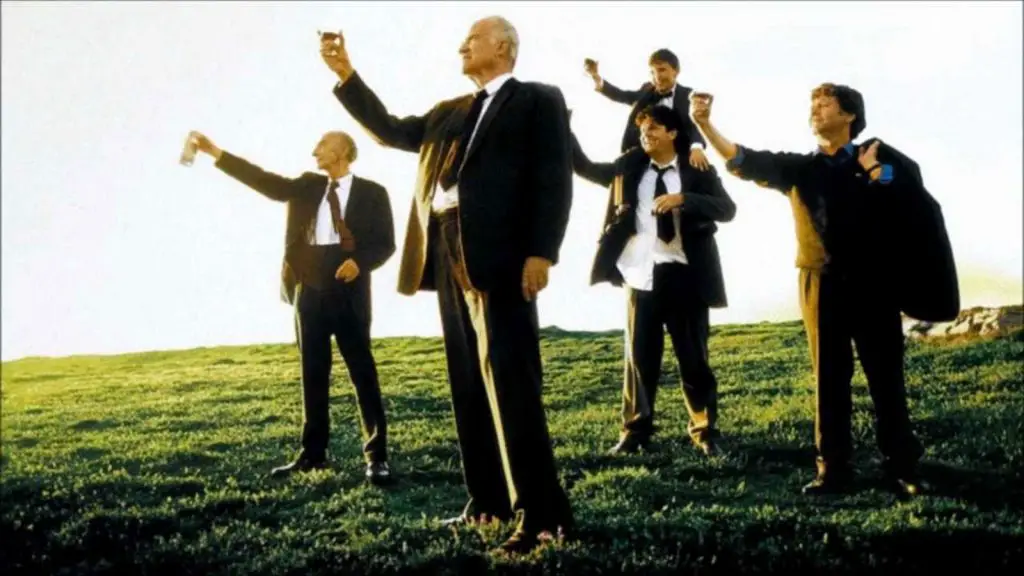
“Big is Best” undoubtedly seems to be the wile of most of Hollywood’s Summer blockbusters, and though that’s always been the case to some extent, when imaginative duo Roland Emmerich and Dean Devlin entered the picture a couple of years back with their ultra-budget eye-popping sfx bonanza “Independence Day”, everything of chubby magnitude prior to that paled in comparison. Since then, the tent pole flicks seem to be locked in an observable struggle to spend as much studio moolah as possible, blow up as many set pieces as feasible and ware to the bone as many Apple i-macs as one can.
After the failure of his habitually pricey Godzilla (1988), “The Day After Tomorrow” marks a return to form for Roland Emmerich, working without Devlin this time, a rousing, eye-popping spectacle of special effects, the best Hollywood money can buy.
Climatologist Jack Hall (Dennis Quaid) has just realized that the globe could be in big, big trouble. Seems global warming has triggered a rapid and ruinous shift in the planet’s climate, and one by one, cities are going to go crash, boom, bang. Tokyo experiences grapefruit-size hail, record-breaking winds hit Hawaii, snow pelts down in New Delhi and tornadoes leave Los Angeles for dust.
Professor Rapson (Ian Holm), one of Hall’s colleagues stationed in Scotland, confirms Jack’s worst fears: These catastrophes are symptoms of a global change, signalling the destruction of life as we know it and the return of the ‘Ice Age’.
In between trying to convince officials at the White House as to the importance of evacuating whole cities, Jack and two colleagues head – in car, and eventually, foot – to snowed-in New York where a father has promised his son (Jake Gyllenhaal) that he will come rescue him.
More of a companion piece to “Independence Day” than a remake, sequel or isolated effort, Emmerich’s film – like his previous efforts – puts prominence on the outlandish special effects and CGI before anything else. From giant hail crashing on Tokyo to a mammoth waterfall gushing through Manhattan, he’s utilized every ounce of computer magic and effects wizardry as possible. And although, at times, some of the razzle dazzle looks a little bit too much like it was created for a videogame and not realistic enough (some CGI wild wolves, case in point), there isn’t a scene that won’t be truly appreciated by at least three quarters of the popcorn-munching cinemagoers in the audience, hungry for some of that ‘big’ stuff.
As with “Independence Day”, Emmerich has filled his picture with some of the best actors around, only this time the characters seem a bit more ‘humane’ than, say, Jeff Goldblum’s geeky scientist, or Bill Pullman’s gung-ho President. Much of the credit should probably go to the always dependable Dennis Quaid. One of the most underrated actors of his generation, Quaid takes what’s essentially a cardboard character and gives him standing sentiment and some welcome qualities that the audience will undoubtedly find easier to back. Points also go to whoever suggested Jake Gyllenhaal play his typically timid, but audacious teenage son. Together, they’re probably – next to the effects of course – one of the movie’s best assets.
What Emmerich’s been criticised for with his previous movies is the clichéd characters and woeful dialogue. Unfortunately, both make an unasked for return here. The dialogue is very slipshod, wooden and as plain as the nose on your face; it’ll make the addressees feel as if the filmmakers are speaking to them like they were all relatives of Mike Tyson. In addition, some of the characters (the rich kid who lives in an apartment loft alone, because his parents are away on business, for example) feel about as old as socks left by the heater. Still, you’ve got to expect a certain amount of ‘dumbing down’ in a film like this. Not that that helps in our endeavor to disappear in the world created on-screen.
One aspect of the movie that probably could have been tinkered with, though, is the third act. It’s as pedestrian as that Elvis impersonator at the local hot dog stand. Having blown up, sank and smashed everything within the film’s first hour, there doesn’t seem to be anything left for the characters to do in the last third of the film but sit, wait, warm their hands, look out the windows and look – again – at the radar charts. Ok, so it makes sense that the mega-storm would eventually subside, but the suspense and gripping nature of the film’s first half ostensibly hopped a cloud, exiting the action, too. Why? Just one more punchy sequence nearer to the film’s end and it would have been a much more captivating couple of hours. Even if they’d tie up some of the secondary characters’ storylines better (Sela Ward’s, who plays Quaid’s nurse wife, for example, or Holm’s remotely located professor) with the remaining time.
Still, “The Day after Tomorrow” is cinema at its loudest, biggest, most spectacular and funnest. Having said that, it has to be seen in a theatre – one with a good set of speakers aligning the wall and a nice elongated screen – otherwise you won’t experience the full effect of the thumping soundtrack. If you’re the type that doesn’t mind leaving your thinking cap with the usherette before the show, you’re going to have one hell of a time, and get an economical ‘environmental’ sermon as well.
Disagree with this review? Think you can write a better one? Go right ahead in Film Threat’s BACK TALK section! Click here>>>
